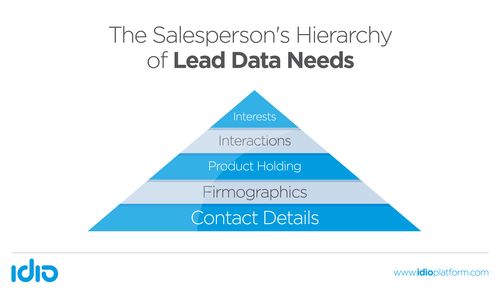For anyone working in B2B marketing, it's hard to ignore the rapid ascendance of marketing automation over the past few years. If you take the time to dig below the undulating praise, however, you'll see that the joys of marketing automation are not as clear-cut as you might first believe.
Only 2.8% of B2B enterprise marketers say marketing automation-powered campaigns achieve their demand generation goals, according to the Annuitas 2015 B2B Enterprise survey of 100+ B2B enterprise marketers from organizations with annual revenues exceeding $250 million.
B2B technology analyst David Raab says almost 70% of marketers are either unhappy or only marginally happy with their marketing automation software
And Bluewolf's most recent State of Salesforce study found that only 7% are seeing good, measurable ROI from their marketing automation investments.
Acknowledging the Limitations of Marketing Automation
It's important to understand what marketing automation does well—as well as what its limitations are.
Marketing automation works well when a well-defined process in place; it doesn't automate your marketing so much as streamline and scale your current processes. Fundamentally, marketing automation is a workflow tool, not an automation tool.
All marketing automation relies on preset logic ("If this X happens then do Y"; "if X does not happen, then do Z") and traditional purchase funnel theory to design the architecture of marketing campaigns and trigger communications.
The problem is that the buyer journey is much more complex than marketing automation vendors would have you believe—it's not simply a "set it and forget it" deal.
Also, marketing automation means having to bring on more—not less—staff. As well as a marketing manager, a database manager, a demand-gen exec, and a content strategist, you will most likely need a marketing technologist who is able to help you get the most out of your new system.
Finally, marketing automation ignores that prospects are continually evolving in their interests, needs, and motives. Marketing automation can provide you a lead score, but it doesn't tell you why a prospect is so engaged.
Preparing Your Organization for Marketing Automation
All that isn't to say that investing in marketing automation is a fool's errand. However, the effort, resources and strategy needed to make the most of any MA tool is usually greatly underestimated.
So, if you are considering using marketing automation, first prepare your organization in the following seven ways.
1. Know your ideal customer profile
If you are going to get the most out of your marketing automation tool, you must go through the process of defining your ideal customer profile and your buyer personas—up front.
Marketing automation relies on rules that segment and send messages based on each recipient's profile (job title, industry type, etc.). You need to know what these are before you start automating the messages you send to them.
2. Collect the right lead data
Very early on in your marketing automation journey, it will become clear that data quality is everything. The quality of the data you collect via your Web forms or social sign-ins will determine what you can do with those leads. It's therefore vital that you collect enough data to be able to segment leads in your database.
You should start by simply collecting contact details, but data can extend to product history (what they've bought) or even interests (based on what they've read).

3. Don't make procurement a unilateral decision
A grievous mistake occurs when the procurement of a new technology is led by a CMO who does not involve the content, email, CRM, and SEO teams—all of which eventually find themselves handling a technology they had little part either in exploring or discussing.
That inevitably leads to (dis)ownership issues within Marketing regarding who is in charge of the platform once it has been brought in.
4. Test on a small subset of your database first
Most organizations cannot wait to get started with marketing automation. However, rather than unleashing campaigns on your entire customer database and causing a massive spike in churn or opt-outs, take time to test on small samples to see how they respond to your new marketing capabilities.
5. Make sure you have enough content
Too often, marketing automation programs begin in earnest and then run out of steam soon after because the organization has too few whitepapers or blog posts to send to prospects and leads.
Content is certainly not "one size fits all," and care must be taken to ensure that the content being produced and inserted into the nurture programs is fit for purpose.
6. Know your industry benchmarks
Industry benchmarks are a great way of setting some minimum expectation levels for performance. Benchmarks also put your own performance metrics into context and prevent you from focusing on metrics that may look interesting but do not influence the bottom line.
7. Have patience
Ultimately, it takes time to get marketing automation working. It requires discipline and commitment as well buy-in from multiple stakeholders within both the marketing and the sales organization.
* * *
When implemented correctly, marketing automation really can be a boon to B2B marketers that are looking to send relevant communications to their leads and prospects. However, in all the excitement surrounding this emerging technology, it's incumbent upon these same marketers to be cognizant of the issues that can arise—and therefore prepare their organizations accordingly.




